
Since its invention in the early 20th century, the electric guitar has captivated musicians and audiences alike. From Jimi Hendrix’s psychedelic riffs to Eddie Van Halen’s soaring solos, the electric guitar is the backbone of rock, blues, jazz, and countless other genres. If you’ve ever dreamed of shredding on stage or jamming in your bedroom, learning to play electric guitar is an accessible and rewarding journey. Unlike acoustic guitars, electric guitars rely on amplification to produce sound, offering endless tonal possibilities through effects pedals and amps. This guide will take you from absolute beginner to confident player, covering everything from choosing your instrument to mastering basic techniques. Whether you’re a complete novice or have some musical background, this 1500-word article will equip you with the tools to start your electric guitar adventure. Let’s plug in and get started!
Choosing Your First Electric Guitar: Recommendations for Beginners
Before you dive into playing, selecting the right guitar is crucial. As a beginner, you want something affordable, comfortable, and versatile to avoid being discouraged by poor quality. Look for guitars with solid build, easy playability, and beginner-friendly features like lightweight bodies and adjustable necks. TOSTAR’s TST-130 and TST-140 are two excellent electric guitar kits designed for beginners. These models stand out for their quality materials, thoughtful design, and included accessories, making them ideal for newcomers.
The TOSTAR TST-130 is a fantastic entry-level choice. Its 39-inch body is crafted from premium Maple with a quilted top, featuring a Matte Blood Black finish and black hardware for a striking, premium look and feel. The Maple neck and Amaranth fretboard provide a smooth playing surface. Equipped with three single-coil (S-S-S) pickups, it delivers bright, versatile tones suitable for rock, funk, jazz, country, and blues. The 5-way pickup switch and tone/volume controls allow you to experiment with sounds right away. High-frequency vacuum drying ensures the wood resonates clearly, and the 12-inch radius fingerboard makes fretting easier for beginners. High-quality alloy tuners, phosphor bronze strings, and a high-hardness bridge saddle ensure stable tuning. The kit includes a portable 10W amp with Bluetooth support, tuner, capo, guitar stand, strap, picks, spare strings, and more—everything a beginner needs without extra purchases. Its tremolo system lets you bend notes expressively, and the C-shaped neck prevents finger fatigue. If you’re into classic Stratocaster-style tones, the TST-130 is a no-brainer.

The TOSTAR TST-140 steps it up with a roasted Canadian Maple neck, enhancing durability and stability while delivering warm, vintage tones. Its ergonomic neck design with a contoured heel ensures effortless high-fret access, perfect for complex chord changes and solos. The Maple body and Laurel Wood fretboard add smoothness, with a weight of about 13.67 pounds. It features H-H hot-rail pickups, blending humbucker power with single-coil clarity, ideal for rock, blues, jazz, and more. Sealed split-shaft tuners ensure precise tuning and easy string changes. With 6 strings, a tremolo/hard tail bridge, and right-hand orientation, this guitar is versatile and durable, perfect for beginners exploring bolder styles. The beginner kit mirrors the TST-130’s accessories, ensuring you’re gig-ready from day one. If you want a guitar with personality and powerful tone, the TST-140 is highly recommended. 
Both guitars prioritize playability with rounded fret ends, dual-action truss rods for neck adjustments, and low string action to reduce finger strain. They suit all styles, but the TST-130’s S-S-S setup leans toward cleaner tones, while the TST-140’s H-H pickups handle distortion better. Choose either, and you’ll avoid the pitfalls of cheap knockoffs that go out of tune or feel uncomfortable.
Understanding Your Electric Guitar
Once you’ve got your guitar—like the TST-130 or TST-140—familiarize yourself with its parts. The body is the main frame, housing the pickups (magnets that capture string vibrations and convert them to electrical signals). The neck extends from the body, with frets (metal strips) dividing it into notes. The headstock holds the tuning machines (pegs) for adjusting string tension. Strings run from the bridge (at the body) to the tuners. Electric guitars have volume and tone knobs, plus a pickup selector switch. On TOSTAR models, the tremolo system (whammy bar) allows pitch bending. Understanding this anatomy helps troubleshoot issues and appreciate how sound is produced—strings vibrate, pickups amplify, and the amp broadcasts.
Tuning Your Guitar: The Foundation of Good Sound
No matter your skill level, an out-of-tune guitar sounds awful. Standard tuning is E-A-D-G-B-E (from thickest to thinnest string). Use the included tuner in your TOSTAR kit—clip it on the headstock and pluck each string, turning the tuners until the display shows green. Apps like Guitar Tuna or online tuners work too. The TST-130 and TST-140’s high-quality tuners and nuts ensure stable tuning, but check before every session. Alternate tunings like drop D (lower the low E to D) open up heavier riffs, but start standard. Pro tip: Stretch new strings by pulling gently after installation to minimize detuning.
Proper Posture and Holding the Guitar
Comfort is key to avoid injury. Sit or stand with the guitar strap adjusted so the body rests at waist level. Hold the neck with your fretting hand (left for right-handers), thumb behind the neck for support—don’t grip like a baseball bat. Your picking hand (right) hovers over the strings near the bridge for control. Use a pick from the kit, holding it between thumb and index finger. Practice strumming open strings to get the feel. The C-shaped necks on TOSTAR models promote natural grip, reducing cramps during long practices.
Learning Basic Chords: Building Blocks of Songs
Chords are groups of notes played together. Start with open chords: E minor (Em) uses strings 1-6 open except fretting 2nd and 3rd strings at fret 2 with index and middle fingers. A minor (Am) frets string 2 at fret 1, strings 3 and 4 at fret 2. Practice switching between Em and Am slowly. Move to major chords like G (fret 6 at 3, 5 at 2, 1 at 3) and C (fret 5 at 3, 4 at 2, 2 at 1). Use online chord charts or apps. The TST-140’s ergonomic neck makes high-fret chord transitions seamless. Strum downward with your pick, aiming for even volume. Learn songs like “Horse with No Name” by America, which uses Em and D6/9—simple yet satisfying.
Basic Picking and Strumming Techniques
Strumming patterns add rhythm. Downstrokes (picking down) for emphasis, upstrokes for lighter beats. Practice a basic pattern: down-down-up-up-down-up. For single notes, alternate picking (down-up repeatedly) builds speed. Hammer-ons (fretting a note then tapping a higher fret without picking) and pull-offs (releasing a fretted note to a lower one) add expression. The TST-130’s S-S-S pickups shine in clean strumming, while the TST-140’s H-H setup handles aggressive picking with less hum. Start slow at 60 BPM using a metronome app, gradually increasing speed.
Scales and Riffs: Unlocking Melodies and Solos
Scales are sequences of notes. The minor pentatonic scale (root on low E, fret 5: 5-8 on E, then A string 5-8, etc.) is beginner-friendly for bluesy leads. Practice ascending and descending. Riffs are catchy phrases—learn “Smoke on the Water” (E string: 0-3-5, 0-3-6-5, etc.). Bend strings by pushing up for emotional notes; the tremolo on TOSTAR guitars aids this. Use the amp’s tone knob to shape sound—crank distortion for rock riffs on the TST-140.
Amplifiers and Effects: Amplifying Your Sound
Your TOSTAR kit’s 10W amp is portable with Bluetooth for backing tracks. Plug in, set volume low, and experiment. Add effects pedals later: distortion for crunch, delay for echoes. The amp’s headphone jack lets you practice quietly. For the TST-130, pair with clean settings; for the TST-140, overdrive enhances its hot-rail pickups.
Practice Tips and Resources
Practice 20-30 minutes daily. Record yourself to spot mistakes. Join online communities like Reddit’s r/Guitar or YouTube channels (Justin Guitar, Marty Music). Apps like Yousician gamify learning. Track progress with a journal. Consistency beats intensity—even pros started as beginners.
In conclusion, learning electric guitar is about passion and persistence. With the TOSTAR TST-130 and TST-140, you’re equipped for success. Grab one, tune up, and let the music flow. Happy playing!

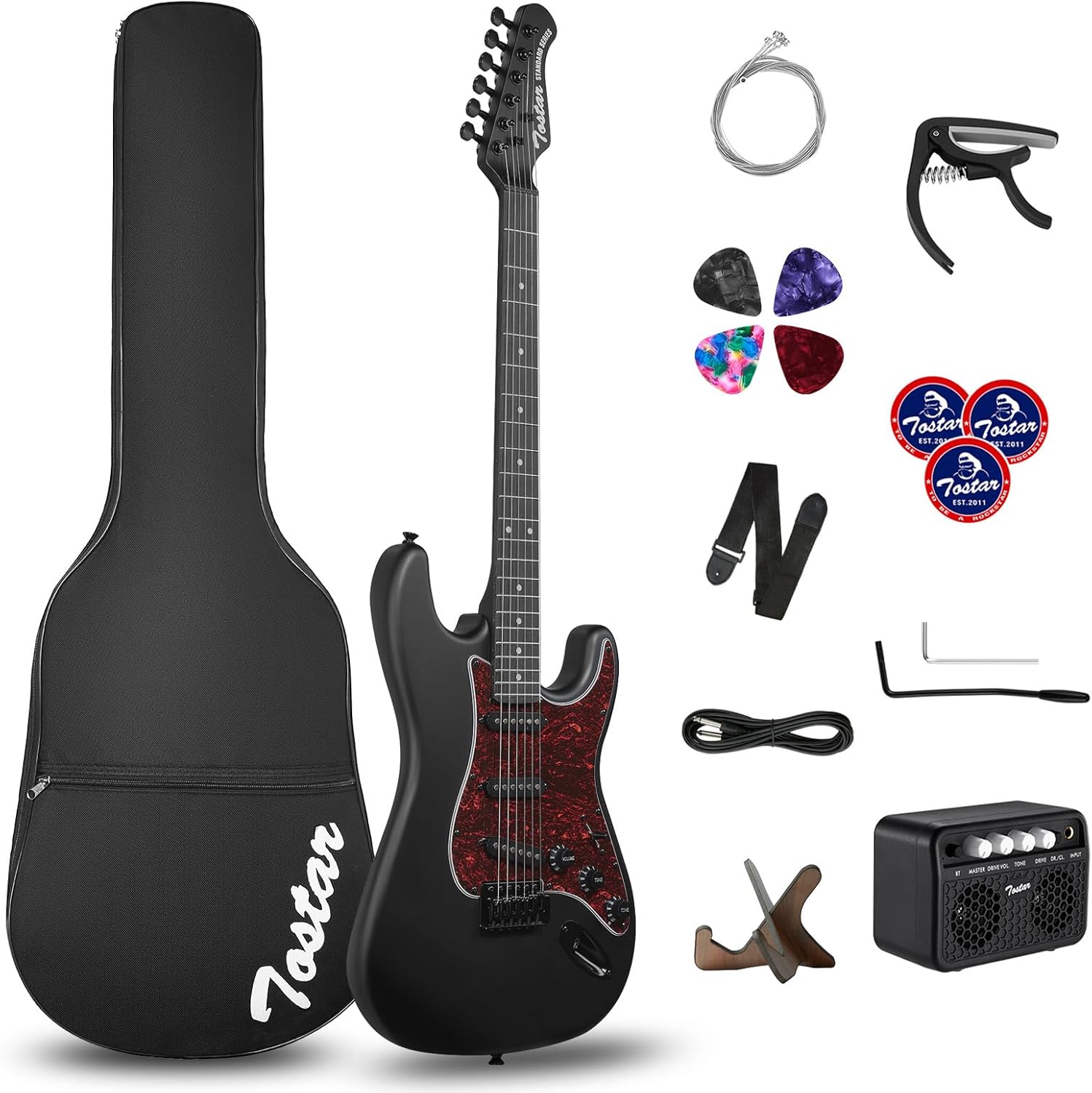
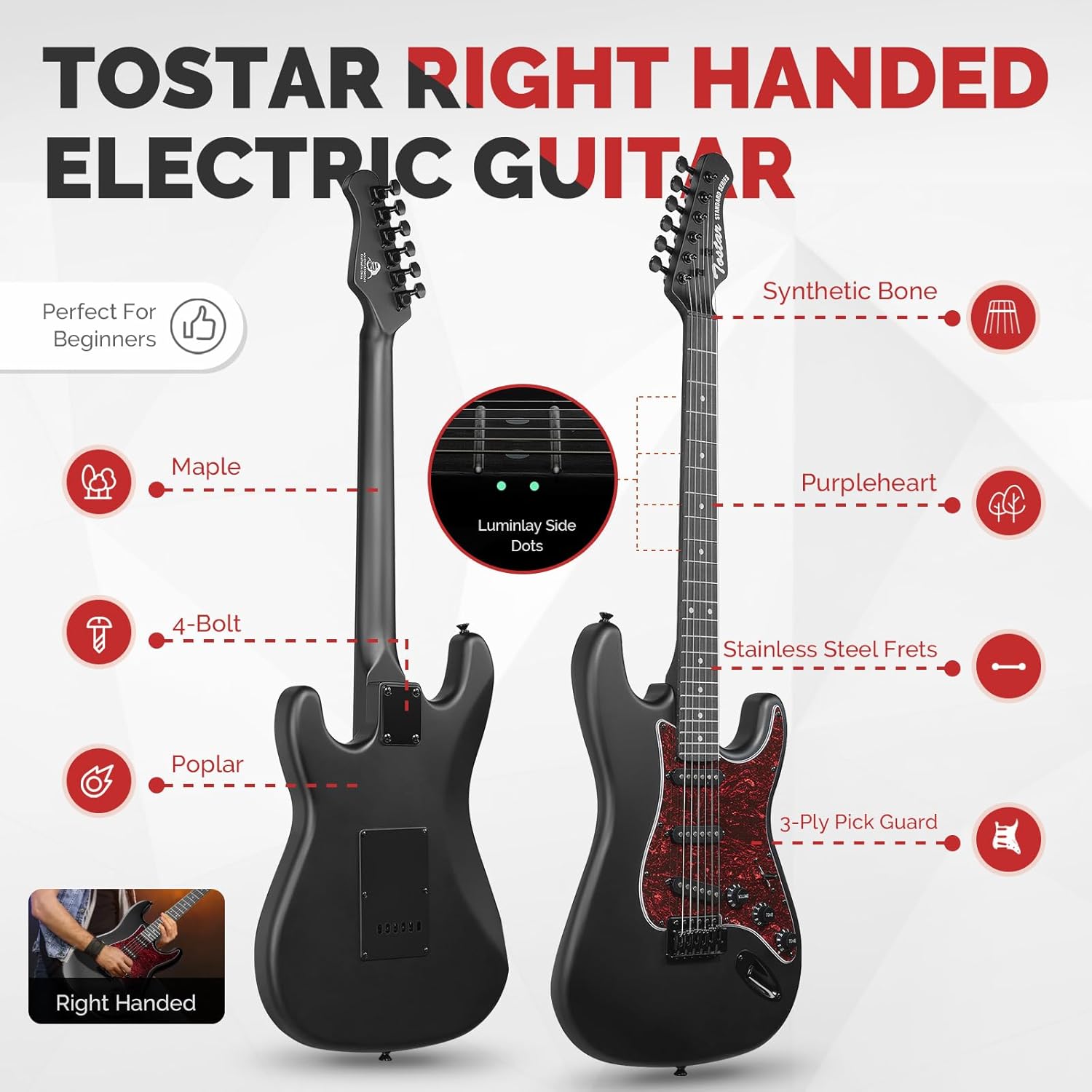

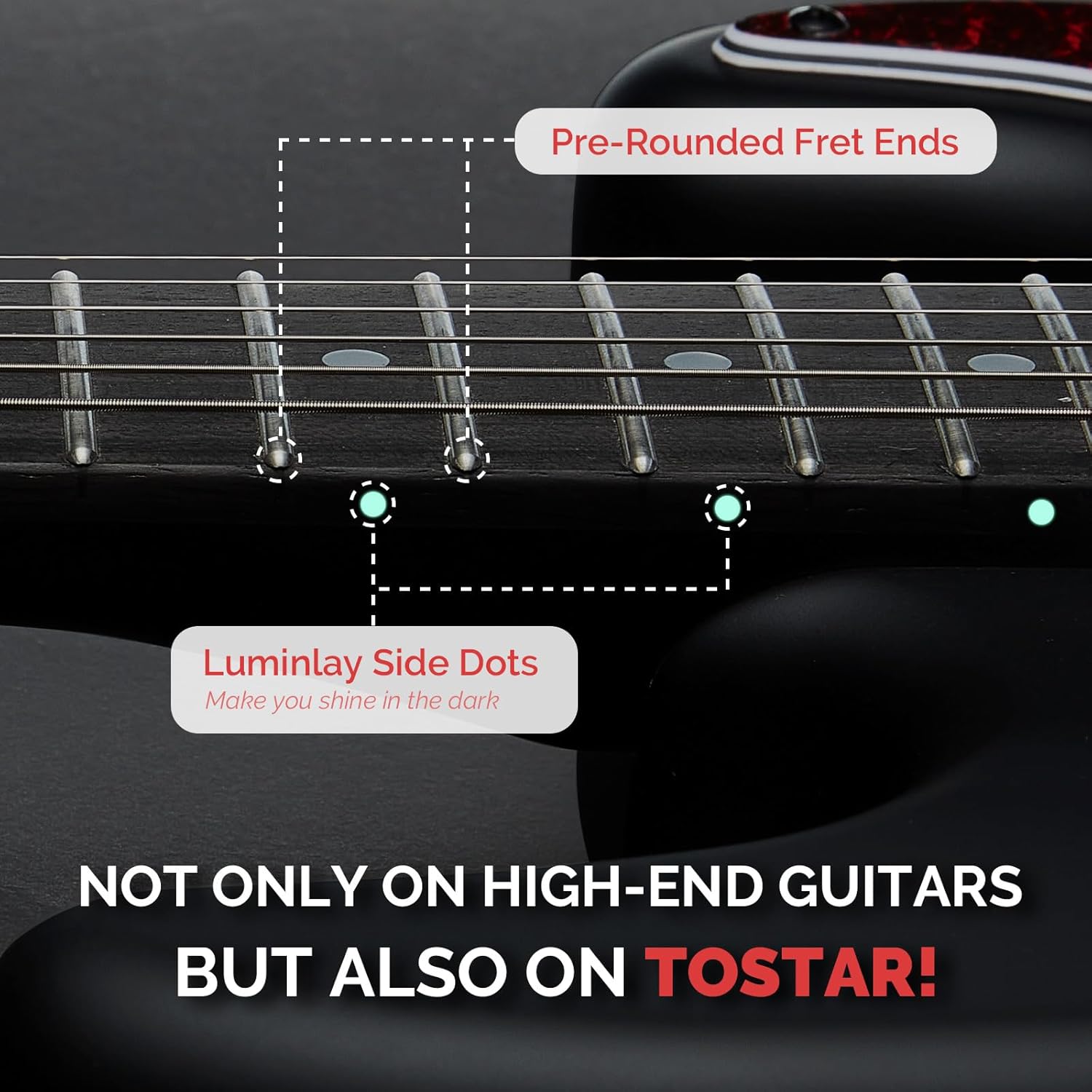
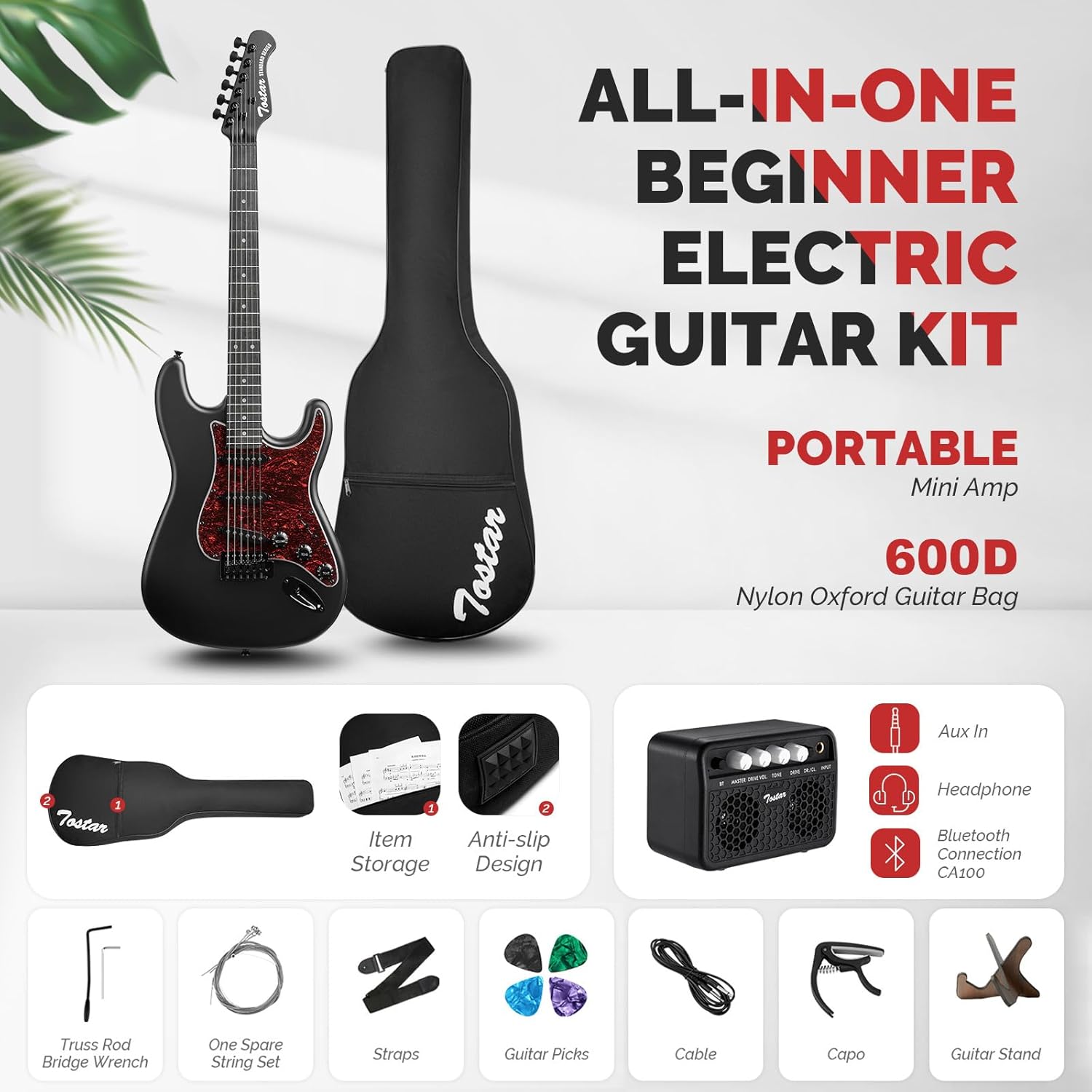
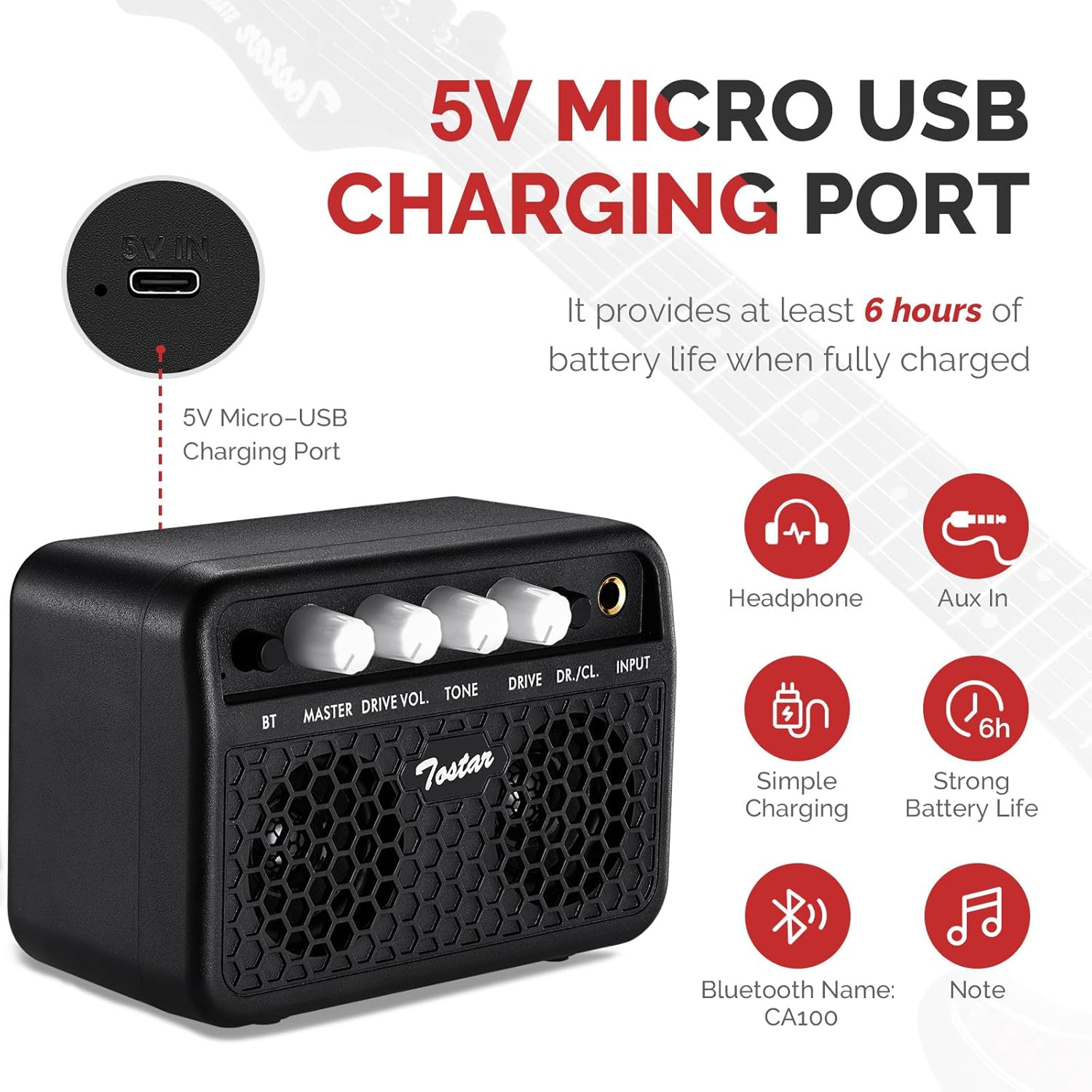
Share: